|
Welcome to my first blog post of 2016! My yoga teacher pursuits are still on my "so-called" resolution list - okay, maybe it’s been there for many years already! That’s fine with me because once I’m a teacher, I’ll be sad to be done my blog! I entered my practice this week with an outlook of adventure and play. The title of my online practice “Expanding Your Horizons” seemed fitting for the first week of January. I was keen for some challenge but what I got was much more! Believe it or not, I enjoyed a couple laughs and falls out of twisty poses. One such twisty pose was fallen triangle pose. Wait a minute…what’s fallen triangle? I was happily surprised to learn a whole new version of trikonasana, triangle pose. Literally, it is triangle pose on its side. Initially, I didn’t really comprehend what I was doing with my body. I entered it via a three-legged downward facing dog and found myself tucking the extended knee in to only extend the leg out from under me to the opposite side. I can say without a doubt, I’ve never done that version before!
The key to proper positioning was in the feet. They needed to rotate outward - back foot into warrior two position and front foot into an inverted/side position. The subtle change of my foot position made all the difference in the world. I felt solid on my foundation and was able to lift my outside arm up to the sky. Wow! It wasn’t until Tracey said what the pose was - fallen triangle - that I was able to put two and two together and see that it was my beloved triangle pose, just on its side! What I would say is this new version was an excellent core strengthener as well as a chest opener. It likely contributed to the feeling of openness that I had after practice. What a fun and fantastic way to start 2016’s journey and exploration of yoga! Yet again, Tracey’s asana sequence knocked my socks off! I may have fallen, but I’ve definitely got up. Ready for what the year has to bring! LW
1 Comment
This week I am in Barcelona, Spain competing in Life Fitness' Global Personal Trainers to Watch competition. Since I am in the learning phase of my yoga training, yoga is always on my brain. Being in Spain made no difference. Thus, in the wee hours of the morning, jet-legged and all, I was up writing a yoga sequence that I could do on the Life Fitness Synrgy BlueSky. Here is what I came up with! Monkey Bar (Long) Dip/Leg Raise StationArc LadderTraverse Bar (Long)
Step Station
Cargo Net (Long)
Row Station Press Station Pull-Up (Short)
Ab Station
Having a chance to "play" on a new piece of equipment is always fun for me. This event was an experience of a lifetime and my yoga teacher in training came along for the ride too! LW In my early days of yoga practice, I have to admit that I was a bit of a props snob. Maybe because of my age or maybe because my body let me do pretty much whatever I wanted, I thought props were for the weak. But within the last five or more years of practice I have gained great respect for all yoga props. As my body morphs into the curvy, anterior ball shape of pregnancy, the use of blocks has been essential to my practice. The two most common types of blocks available are unique and each have there own purpose. Harder wood or foam blocks act more like support as opposed to the softer rectangular foam variety that provide cushion and give. These are my modifications to practice this week using my foam rectangular blocks (still needing to buy wooden blocks for home!): Easy Pose (Sukhasana) & Revolved Head to Knee Pose (Parivrtta Janu Sirsana) As I've stated before, I love sitting on the ground. Yet, to give some relief to my low back, I do like to sit on my block(s). By raising the hips slightly, it causes less tension in the hamstrings and low back. These two poses were much easier with ease in my back! Triangle Pose (Trikonasan) & Extended Side Angle Pose (Utthita Parsvakonasana) Since my body isn't able to twist as easily these days nor bend over as far, I used my block to give some height to the pose. Placing my hand on the flat block, allowed the asana to be less strained than if I tried to reach for the ground. Not here to make leaps in my yoga practice, just wanting to maintain! Deep Squat/Garland Pose (Malasana) Interestingly, it is a day to day variation as to whether or not I can place my feet flat on the floor in deep squat. So on those days I can't, my best option is to place the blocks under each foot so that my heels have something to rest on. The blocks allow me to feel more grounded in a position that can be very tricky to hold and balance! Hero Pose (Virasana) It is nice to have variations for sitting poses. In about 1/8 of my practice do I actually sit in a kneeling position so it is a welcomed change of position. In this pose, I sat on two blocks to minimize the strain on my legs and quite frankly, allow space for the baby! So, who knew that I'd love my yoga blocks so much. When I bought them for home, I was thinking they'd just gather dust. Now, they are a mainstay of my prenatal yoga! Blessed to have my blocks, LW 34 weeks pregnant!
This is the last week of revisiting a yoga journal I completed 12 years ago. At the time, I picked poses that I was finding a challenge during the practical classes. Interestingly, some poses are "easier" today and others are just as challenging. Here are the three I practiced this week: Triangle Pose (Trikonasana) Even back 12 years ago, I really liked this pose. I suppose it is the flexible hamstrings I've got. But I'd have to say that my understanding of how to do the pose has greatly improved over the years. I think the key piece was not collapsing into the pose as I lean over to the side. I had always wanted my hand to touch the floor not realizing that my side body and ribs were compressed. Practicing in Judy's classes, I have been able to increase the opening of my side (hard to believe!) and get greater range in the pose. This weeks practice just reinforced how I use to do the pose and how it has changed. Challenging still - yes - but done better. See here for what else I have learned about triangle pose lately. "Doing this pose first allowed me to warm up for the rest of the poses. I began to feel a warm sensation as I did the pose. I think that it was my body waking up and realizing that I was doing something vigorous and physical. I found that my body was tight and not free flowing. I did the pose more than once because I wanted to feel the position with a more limber body." The more I practiced yoga, the more I find areas of my body that have been neglected. Three previous car accidents have left my cervical spine (neck) in a bit of disarray. My focus has been on my hip and back for years and the neck just didn't get the well-deserved attention that it needed. Lately, I've been working on limbering up my neck as the pain and tightness has increased. More formal treatment through chiropractic and physical therapy have been my main forms of repair; however, I've started to be watchful of my neck during my yoga practice and day to day activities. Much similar to my focus to stand straight! This past week I borrowed the book, Yogabody: Anatomy, Kinesiology, and Asana by Judith Hanson Lasater, from the library and the first chapter I jumped into was the neck. I found two very interesting things in the chapter. The first being how the cervical spine rotates and the second being a safety precaution that is a "need to know" for an aspiring yoga teacher. Here are the details. 1. The General Rule of Side Bending and Rotation of the Cervical Spine The Hanson Lasate writes: "In the cervical region, side bending and rotation occur to the same side, regardless of the position of the cervical spine at the beginning of the movement. For example, when you side bend to the left, the bodies of the vertebrae also rotate to the left. In other words, as the bodies rotate right, the spinous processes [rear portion of the vertebrae] are pointing left." Photo Credit: Yogabody: Anatomy, Kinesiology and Asana I contemplated this idea for some time by palpating my spine and bending and rotating. The really great thing about this book is that each chapter ends with suggested asanas to try. This chapter ended with triangle pose (Utthita Trikonasana) which was interesting to explore. As the body rotates to the right in triangle pose, the natural tendency is to have the cervical spine body rotate to the right as well. Yet, in this pose the face is cued to look upwards and thus, the cervical spine is rotating in the opposite direction. Hanson Lasate writes: "We can override this law by purposely choosing another action. But it is likely that when we do, there may be discomfort." That's why my neck feels so awkward in triangle pose. Interesting! Next time in triangle pose, I'll listen to my body and look forward or down once the neck starts to ache. 2. Caution: Protect the Vertebral Artery As I was reading the chapter, I came across a crucial safety precaution when moving the cervical spine in asanas. Hanson Lasate writes: "The movement of the cervical spine can directly affect the blood supply to the brain. This artery [the vertebral artery] can be occluded [blocked] by a combination of rotation and extension...if you rotate to the right and backbend to the right you can occlude the right vertebral artery." This makes total sene when yoga teachers are cueing a seated spinal twist. They always say keep the chin parallel to the floor because if I extended my neck backward, I would block off my main artery to my brain. A key thing for me to know when I begin to teach!
So, the neck, as many other areas of life, needs some attention. And it will be getting the care to reduce its irritation in the upcoming days and practice. LW "The divine in me greets the divine in you." How beautiful!
One of the things I love about yoga is the poetic language. It's not like yoga teachers are using words other than English (okay - maybe when they are using the Sanskrit name for a pose) but it is how they are using words. It is the flow, the sounds, and the feeling they are able to invoke. It is amazing! Striving to be a teacher one day, it dawned on me that I too will need to be able to do this in a class. Now what I currently do, as an exercise physiologist and group fitness leader, is different in a sense as I typically use my voice and word choices to invoke intensity, effort, and energy. Whereas in yoga, it's different. Maybe peaceful is the way to describe it? It also just dawned on me that cueing in yoga requires more thought...or at least it seems like that to me now. The cues are not only about alignment and proper position (which I love! Yay biomechanics!) but it is also about the breath - inhale and exhale at the right movements - and highlighting the inherent benefit of doing the pose a certain way at the time of actually doing the pose. Again, it's different and not something I provide when describing a resistance training exercise to a client. I suppose that is more mechanical and direct. For example, in Triangle pose (Utthita Trikonasana), we stand with one foot forward and the other at a 45 degree angle behind (alignment cue), inhale to fill out the pose with arms lifted at the sides to shoulder height, exhale and fill out the pose while lowering the body and placing front arm on the ground (breath cue). Remembering to lengthen the side body to allow space in the ribs and thus, assist with proper breath (benefit cue) Yikes! That is a lot to say about what I would think is a simple body movement. But it all needs to be there! By the way, I love Triangle pose! So note to self, being a great yoga teacher requires good communication skills, a relatively large vocabulary of descriptive words and the ability to convey a feeling that the pose should invoke. I've got my work cut out for me! LW |
Aspiring Yoga TeacherI've practiced yoga since I was a pre-teen and have always found it to keep me centered. I will be a teacher one day and this is my journey to discover teaching and practice. Archives
April 2019
Categories
All
|
Edmonton, Alberta
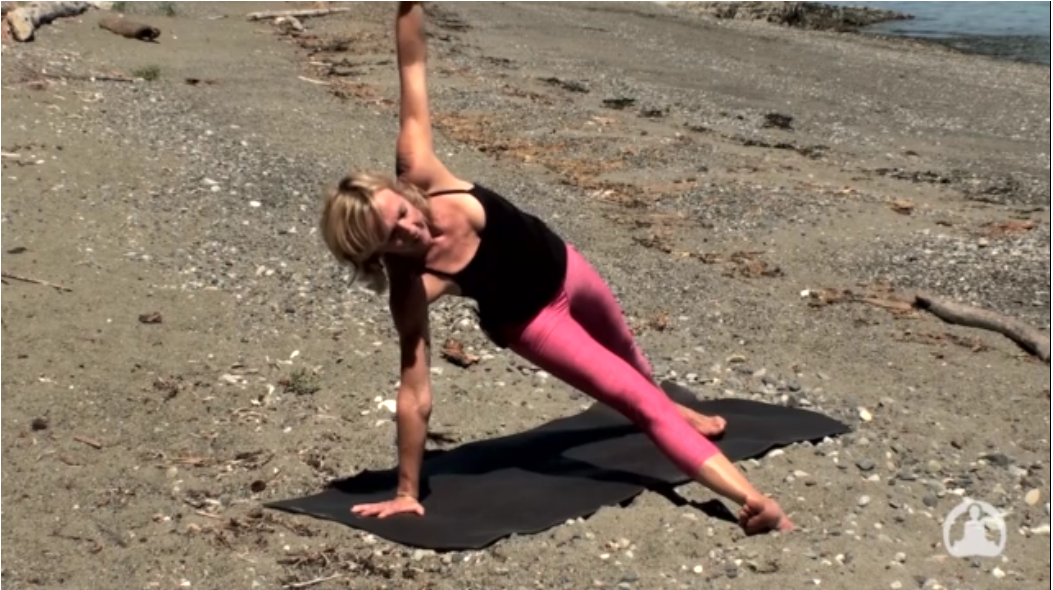

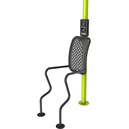
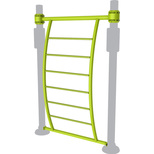
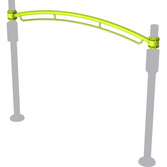
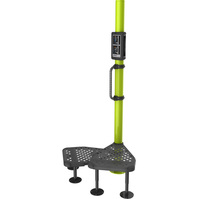
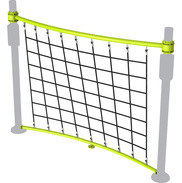
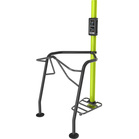
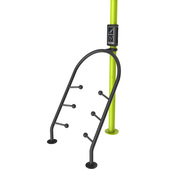
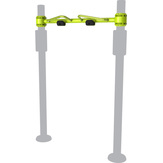
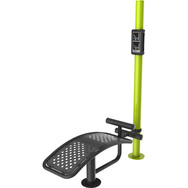
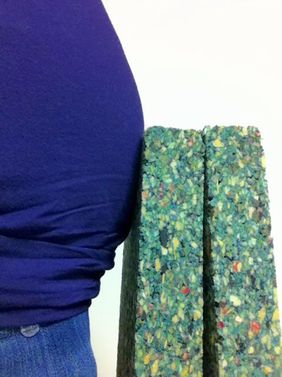
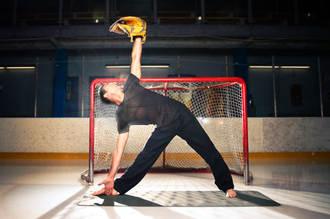
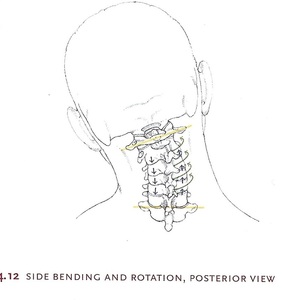

 RSS Feed
RSS Feed